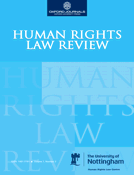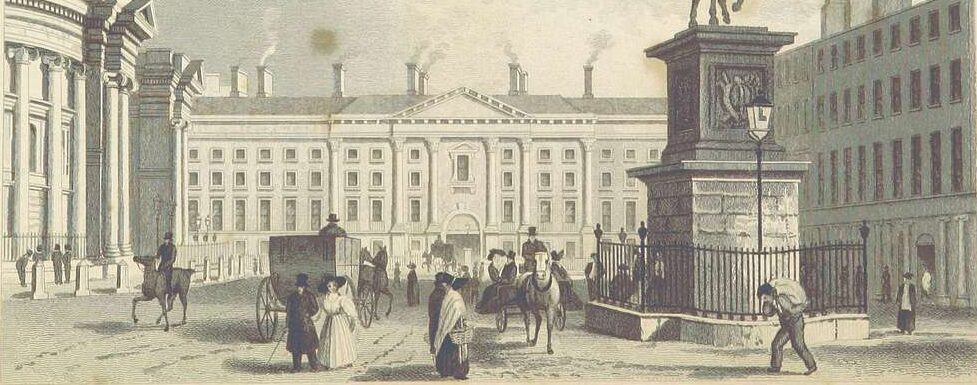 Marking exams, grading papers, and evaluating assessments are the bane of academics’ lives (even worse, in my view, than the ever multiplying waves of administrative paperwork that seem to be taking over the university). During the early summer annual exam marking season, Mary Beard and Ferdinand von Prondzynski had some interesting observations about the process; now, just in time for the late summer repeat exam marking season, Peter Black enters the fray; and all of their observations remind me of the classic guide to grading exams which I commend to all hard-pressed examiners out there. …
Marking exams, grading papers, and evaluating assessments are the bane of academics’ lives (even worse, in my view, than the ever multiplying waves of administrative paperwork that seem to be taking over the university). During the early summer annual exam marking season, Mary Beard and Ferdinand von Prondzynski had some interesting observations about the process; now, just in time for the late summer repeat exam marking season, Peter Black enters the fray; and all of their observations remind me of the classic guide to grading exams which I commend to all hard-pressed examiners out there. …
Author: Eoin
Report of the Working Group on a Court of Appeal
 I’ve written about this report twice already. The first occasion was when a committee chaired by Ms Justice Susan Denham of the Supreme Court was established to consider the necessity for a new Irish Court of Appeal (this was in part a response to an article on the point which Judge Denham had written the previous year in the [2006] 1 Judicial Institute Studies Journal 1 (pdf)). The second occasion when the Government received the committee’s report. In the most recent installment of this slow-moving story, the report was published last week – only three months after it was submitted to government – and to generally favourable reviews in the media (see Belfast Telegraph | Irish Independent here and here | Irish Times | RTÉ). …
I’ve written about this report twice already. The first occasion was when a committee chaired by Ms Justice Susan Denham of the Supreme Court was established to consider the necessity for a new Irish Court of Appeal (this was in part a response to an article on the point which Judge Denham had written the previous year in the [2006] 1 Judicial Institute Studies Journal 1 (pdf)). The second occasion when the Government received the committee’s report. In the most recent installment of this slow-moving story, the report was published last week – only three months after it was submitted to government – and to generally favourable reviews in the media (see Belfast Telegraph | Irish Independent here and here | Irish Times | RTÉ). …
Mobile phones, again
Given my views about mobile phones in class, I’m grateful to John Naughton for his post about this YouTube clip:
…
FoE in the EHRLR
 The current issue of the European Human Rights Law Review ([2009] 3 EHRLR | table of contents (pdf) | hat tip ECHR blog) contains a wonderful piece by my colleague Dr Ewa Komorek entitled “Is Media Pluralism a Human Right? The European Court of Human Rights, the Council of Europe and the Issue of Media Pluralism” [2009] 3 EHRLR 395.
The current issue of the European Human Rights Law Review ([2009] 3 EHRLR | table of contents (pdf) | hat tip ECHR blog) contains a wonderful piece by my colleague Dr Ewa Komorek entitled “Is Media Pluralism a Human Right? The European Court of Human Rights, the Council of Europe and the Issue of Media Pluralism” [2009] 3 EHRLR 395.
Here is the abstract (with added links):
…The need for pluralist media stopped being purely a national concern a long time ago and thus it has for decades been subject to scrutiny by the Council of Europe and the European Court of Human Rights. Media pluralism has always come to their agenda as a prerequisite for freedom of expression guarded by Article 10 of the European Convention of Human Rights. It is important to distinguish the two ‘faces’ of media pluralism: internal (which may also be called content pluralism or diversity) and external (or structural). This article focuses on television broadcasting and argues that while the Court of Human Rights has essentially been successful in safeguarding internal pluralism, the protection of structural pluralism proved more difficult to achieve by means of the Court’s case law. This prompted the Council of Europe to step in and attempt to fill the gap with regulatory proposals.
Open access in the Irish Times
 I have written several times on this blog about open access journals, and I have re-posted some of the wickedly funny cartoons served up daily by Piled Higher and Deeper (PhD). Open access journals are the focus of PhD’s cartoon yesterday (it’s too big to repost here, but click through and enjoy – then come back here for the rest of this post!) (update: I’m not the only one who has used this cartoon as a jumping off point to discuss the future of online scientific publications – Lukas Ahrenberg does too). In one of those rare cases of serendipity which the universe’s roll of the dice can throw up, Quinn Norton has an excellent introductory piece on open access in yesterday’s Irish Times; here are some extracts (with added links):
I have written several times on this blog about open access journals, and I have re-posted some of the wickedly funny cartoons served up daily by Piled Higher and Deeper (PhD). Open access journals are the focus of PhD’s cartoon yesterday (it’s too big to repost here, but click through and enjoy – then come back here for the rest of this post!) (update: I’m not the only one who has used this cartoon as a jumping off point to discuss the future of online scientific publications – Lukas Ahrenberg does too). In one of those rare cases of serendipity which the universe’s roll of the dice can throw up, Quinn Norton has an excellent introductory piece on open access in yesterday’s Irish Times; here are some extracts (with added links):
…Open Access leads the way in promoting academic research
WIRED : Scholars are embracing the internet to bypass publishers and speed the process of research
… In the mid-1990s Peter Suber, a research professor of philosophy at Earlham College in the US, got on the internet and learned how to make web pages. Like many in academia, he decided to post his papers.
Ding, ding! Seconds out, round one: National Portrait Gallery Wikipedia v Wikipedia
Roll up, roll up, for the next great online copyright bout. In the red corner, weighing in at almost 153 years old, is the venerable National Portrait Gallery, an institutional heavyweight if ever there was one. In the blue corner, weighing in at just over 8 years old, is the upstart Wikipedia, a sprightly bantamweight which has bulked up considerably in recent years and now packs a hefty punch. The fight is over whether Wikipedia has infringed the Gallery’s copyright in recently-created digital images of portraits which are out of copyright. A piece on this by TechnoLlama (Andres Guadamuz) – including the choice of image, though its subject has previously appeared on this blog – is too good to pass up (links in original):
…National Portrait Gallery copyright row
Several news sites have reported an interesting copyright case involving the Wikimedia Foundation and the National Portrait Gallery (NPG) in Britain. The NPG undertook a £1 million GBP digitisation exercise, and placed high-definition versions of their pictures in a database locked with technological protection measures. Derrick Coetzee, a volunteer for the Wikimedia Foundation, accessed the database, circumvented the protection, and uploaded 3,300 NPG pictures to Wikimedia Commons.
The political advertising ban rears its ugly head again
I’m sorry I’m coming to this too late to attend the gig, but I’ve only just seen this piece by Lorna Siggins in today’s Irish Times (with added links):
…RTÉ denies censorship of Afri advert over Rossport reference
RTÉ has denied that it has refused to broadcast an advertisement for a social event in Dublin tonight that includes a reference to the Mayo village of Rossport.
Justice and peace non-governmental organisation Afri said RTÉ is censoring its attempt to publicise the event, although it is willing to pay for the 20-second advertisement. An advert for the event was carried on the 98FM radio station yesterday.
Health and safety concerns about original plans by Shell EP Ireland for a high-pressure onshore pipeline led to the jailing of five men known as the Rossport Five for 94 days in 2005.
Over two months ago, RTÉ said it had “difficulties” with the wording of an advertisement for the Afri famine walk because of the reference to Rossport.
MidWest Radio had also declined to accept an advertisement for the famine walk from Afri, saying it had to consult the Broadcasting Commission of Ireland (BCI) on a reference to the Rossport Five.
Identity theft, unilateral mistake as to identity, and wordle

In the case itself, Durlabh Patel sought to buy a Mitsubishi Shogun SWB from a dealer on hire purchase. The effect of the hire purchase agreement was that the hire purchase company, Shogun Finance [Finance] stood in the place of the dealer, and so was effectively the seller of the car. To encourage the sale, Patel produced his driving licence, and Finance did a credit check on him; when that was satisfactory, Finance agreed to the hire purchase and instructed the dealer to let Patel have the car. Patel then sold the car on to Norman Hudson. So far, so uncontroversial; it happens all the time; and the car seller would then pay off the outstanding remainder of the hire purchase price, and buy a new car.…
